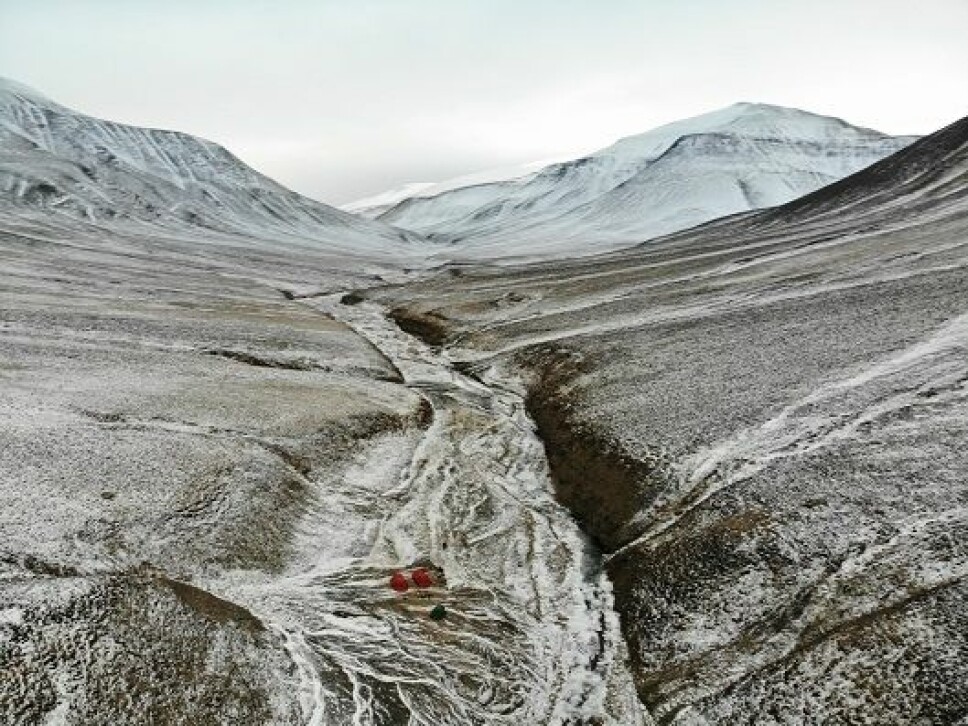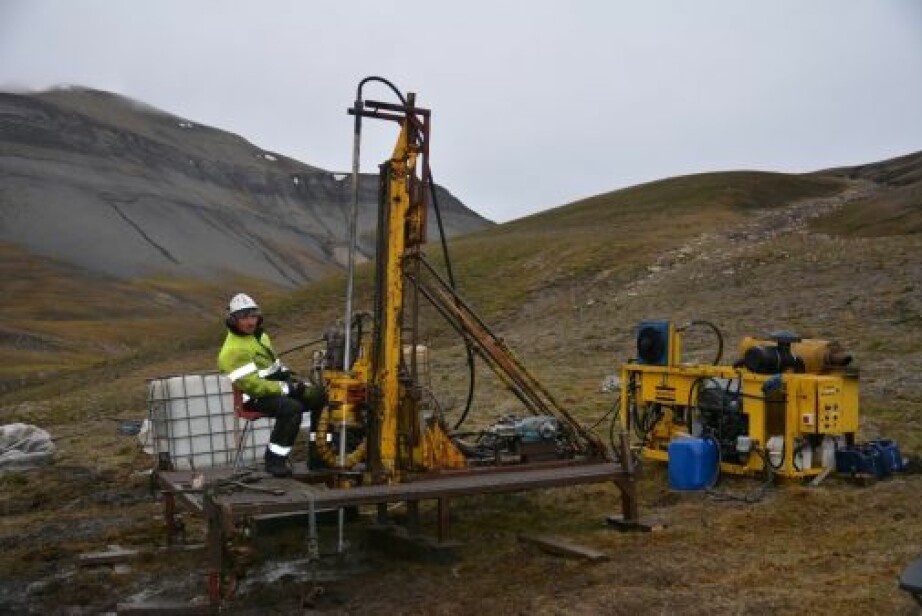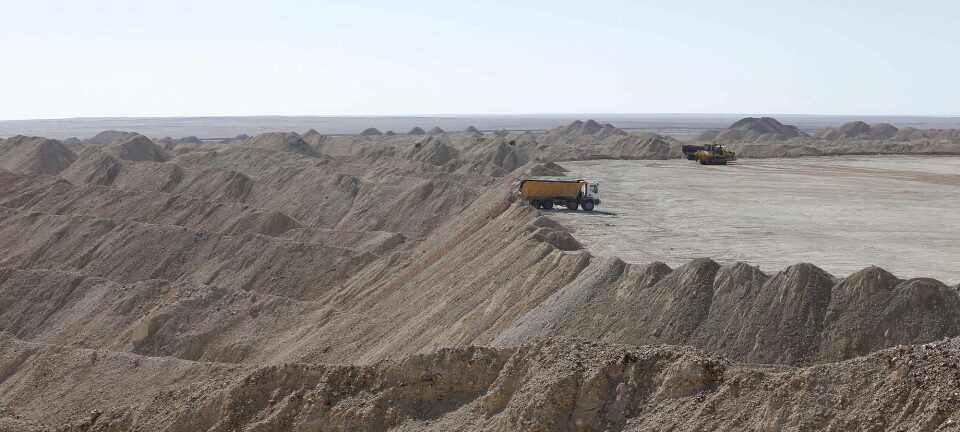
Svalbard provides clues about Earth’s largest mass extinction
In a new study, Norwegian researchers have gotten closer to understanding what happened during the greatest mass extinction of life on Earth. The element phosphorus may have played an important role.
The planet Earth has seen five or six mass extinctions.
Most people know that the dinosaurs went extinct 65 million years ago. But the largest mass extinction on Earth took place 252 million years ago.
Researchers from the University of Oslo (UiO) have been studying an area on the arctic archipelago of Svalbard that at the time was a shallow sea and a slightly deeper seabed. This is how they know more about reasons why 80 to 90 per cent of all marine life disappeared.
On land, 75 per cent of life was lost at the same time.
At this time, 252 million years ago, all the continents were joined together in the great supercontinent Pangea. Land creatures included four-legged reptiles, amphibians and some species that later evolved into mammals. Svalbard was located on the northern edge of Pangea.
The Siberian Traps
The dramatic event has been explained by everything from a large meteorite, to global warming or perhaps huge methane emissions from the seabed.
Both Norwegian and international scientists have now become quite certain that the cause of the mass extinctions 252 million years ago was huge volcanic eruptions during the formation of what is called the Siberian Traps.
But why did a volcanic event in Siberia have such a major impact on marine life?
The catastrophe built up over time
In a collaborative study between researchers from UiO and Russia, the scientists discovered that the relevant volcanic area in Siberia is significantly larger than previously thought.
In stark contrast to what probably happened when the dinosaurs were exterminated by a huge meteorite that hit the Earth, there was a chain of events behind the mass extinction 252 million years ago.
The catastrophe slowly built up.
The Siberian Traps were formed by huge amounts of lava that occasionally flowed out of the Earth's mantle. A lot of gases were released into the atmosphere.
The sea is depleted of oxygen
In the latest study, recently published in the journal Nature Geoscience, Norwegian researchers worked with Martin Schobben from the Museum für Naturkunde in Berlin among others. Geological surveys conducted in two places on Svalbard help to substantiate the researchers' conclusion.
Researchers are now seeing how the element phosphorus may have played a crucial role.
The element phosphorus is an important component in fertilizers, and helps plants grow. Today we know that runoff from phosphorus-containing fertilizer used on land can also affect the ocean and contribute to algae blooms.
Algae in the sea takes many forms, from phytoplankton to seaweed and kelp. But if there are too many algae that die and have to be decomposed by smaller , the seawater can be depleted of oxygen, and marine life can’t 'breathe'. In addition, the decomposition leads to the formation of lots of lethal hydrogen sulphide ('fart gas').
This is how the catastrophe developed slowly but surely, as the sea was supplied with more and more phosphorus.
That’s a brief explanation of what the UiO researchers think happened. They can see evidence supporting this idea from the tests they did on Svalbard.
"Our new study shows how extensive volcanism can have dramatic consequences with effects not only on land, but also in the sea," says Henrik Svensen, a researcher at the Center for Earth Development and Dynamics (CEED) at the University of Oslo.

Volcanism destroyed the sea
Research from Svalbard also shows that the catastrophe in the sea probably occurred when a chemical-physical threshold was exceeded. The amount of phosphorus became too large at one point.
"We’re not sure how all this phosphorus reached the sea. But our hypothesis that phosphorus played an important role is based on the fact that the volcanic rocks in Siberia contain an enormous amount of phosphorus, among other things," Svensen said.
This phosphorus may have been released into the sea through volcanism. All the lava also formed a highland of several thousand meters. The erosion of this new highland may also have released a lot of phosphorus into the ocean.
"We do not have reliable evidence of how much phosphorus ended up in the sea at any point in the extinction, but we consider this to be a probable model," Svensen says.
Did the life in the deep sea survive?
The mass deaths began in shallow sea areas. Eventually it spread deeper into the ocean. The researchers were able to find evidence of this on Svalbard because they studied both what was a shallow sea and what was a slightly deeper sea 252 million years ago.
Researchers wonder if species whose habitat was far out in the deep sea did better than species that lived in shallower waters.
The researchers also found volcanic ash layers that may have originated in Siberia down in the boreholes on Svalbard — which supports the hypothesis.
Even today, phosphorus is added to the sea through runoff from agricultural lands that have been fertilized. This research illustrates what might happen if the supply of phosphorus to the sea becomes too large and exceeds a chemical-physical threshold.
Translated by Nancy Bazilchuk
References:
«Mass extinctions – Lessons from the past», article on the UiO Department of Geosciences webpage. Article.
Lars Eivind Augland et al.: «The main pulse of the Siberian traps expanded in size and composition». Nature Scientific reports, 2019.
Martin Schobben et al.: A nutrient control on marine anoxia during the end-Permian mass extinction, Nature Geoscience, 2020. Summary
———


































